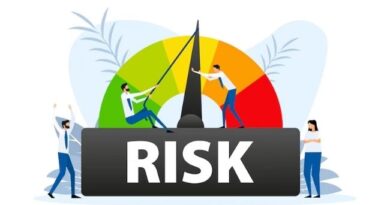Risk Appetite vs Risk Tolerance: Know the Difference (With FAQs for Clarity)
Whether you’re managing a company, running a project, or building a risk framework, two terms you’ll hear often are risk appetite and risk tolerance. At first glance, they sound similar. But in the world of risk management, knowing the difference between them is critical for making clear, consistent, and confident decisions.
Let’s break these two ideas down into plain language, see how they work together, and answer the most frequently asked questions to lock in your understanding.
What Is Risk Appetite?
Risk appetite is the amount and type of risk an organization is willing to take on to achieve its strategic goals.
Think of it as your company saying:
🗣️ “We’re okay with this level of risk if it means we can reach our bigger goals.”
It’s a strategic, top-level statement that reflects leadership’s ambition, innovation mindset, and vision for the future.
Simple Example:
An e-commerce startup might have a high risk appetite, investing heavily in new tech, marketing, and expansion—even if that means operating at a loss in the short term.
What Is Risk Tolerance?
Risk tolerance is the specific maximum level of risk an organization can handle in a given area or activity.
This is more tactical and practical. While risk appetite sets the tone, risk tolerance sets the boundaries.
Simple Example:
That same startup may say:
“We’re okay taking risks to grow, but we won’t spend more than 15% of our capital on marketing each quarter.”
Key Differences at a Glance
| Criteria | Risk Appetite | Risk Tolerance |
| Meaning | Willingness to take risk | Capacity to bear risk |
| Focus | Strategic and broad | Operational and specific |
| Set By | Executives and Board | Business units, compliance, and finance teams |
| Example | Enter new markets | Limit investment per market to 10% revenue |
| Time Frame | Long-term | Short- to medium-term |
Why You Need Both
Imagine planning a road trip:
- Risk appetite is how adventurous you are: “Let’s explore the mountains!”
- Risk tolerance is how far your car can go on one tank of gas.
You need both perspectives to have a successful trip. In business, setting high goals is great—but they need to be backed by realistic, risk-aware limits.
Common Pitfalls
- Being inconsistent: A company says it has a low risk appetite, but approves aggressive strategies.
- Overstepping limits: Ignoring risk tolerance can lead to losses or regulatory trouble.
- Confusing the two: This can cause miscommunication between departments and poor decision-making.
How to Align Risk Appetite and Risk Tolerance
1. Start from the top: Leadership must clearly define strategic goals and desired risk appetite.
2. Translate into action: Departments then create tolerance levels based on their role and resources.
3. Communicate across teams: Everyone needs to understand both the “big picture” and their role within it.
4. Use metrics: Define limits in terms of percentages, thresholds, and KPIs.
5. Review regularly: As your business changes, update both appetite and tolerance accordingly.
FAQs: Risk Appetite vs Risk Tolerance
Q1: Can you have a high risk appetite but low risk tolerance?
Yes. A company might be open to exploring new ideas but want to cap its exposure to losses. It’s like saying: “We want to innovate, but carefully.”
Q2: Who defines risk appetite in a company?
Usually the Board of Directors and executive leadership. It’s tied closely to strategic vision and company values.
Q3: How is risk tolerance set?
Risk tolerance is defined by operational leaders, risk managers, and finance teams. It depends on available resources, laws, and what the business can absorb without major disruption.
Q4: Is risk tolerance always a number?
Often, yes. Risk tolerance is easier to define in quantitative terms (like spending limits, time delays, or acceptable error rates). But it can also be qualitative—like “no reputational risk tolerated.”
Q5: How do these fit into risk management frameworks like COSO or ISO 31000?
Both COSO and ISO 31000 require businesses to clearly define risk appetite and tolerance as part of their overall enterprise risk management (ERM) systems.
Q6: What happens if they’re not clearly defined?
You’ll face conflicting decisions, risk-blind strategies, and possibly serious financial or legal consequences. Clear definitions unite strategy with safety.
Final Thoughts
Understanding risk appetite and risk tolerance helps your business walk the fine line between bold strategy and smart control.
Risk appetite gives you the freedom to dream.
Risk tolerance gives you the discipline to deliver.
When these two are aligned, your organization is better equipped to grow safely, adapt confidently, and make decisions that truly stick.
Explore Best Online Courses to Learn Risk Management
If you’re new to risk management or looking to deepen your expertise, there’s no better time to start than now. Learning from industry experts can help you build a strong foundation and gain certifications that set you apart in the job market.
At www.smartonlinecourse.com, in collaboration with the Risk Management Association of India (www.rmaindia.org), you can explore a range of self-paced, affordable online courses designed for both beginners and professionals. These courses are tailored to real-world needs, taught by experts, and designed for flexible learning.
👉 Visit www.smartonlinecourse.com to explore more!
📧 Email: [email protected]
Or WhatsApp us at: 8232083010/9883398055




